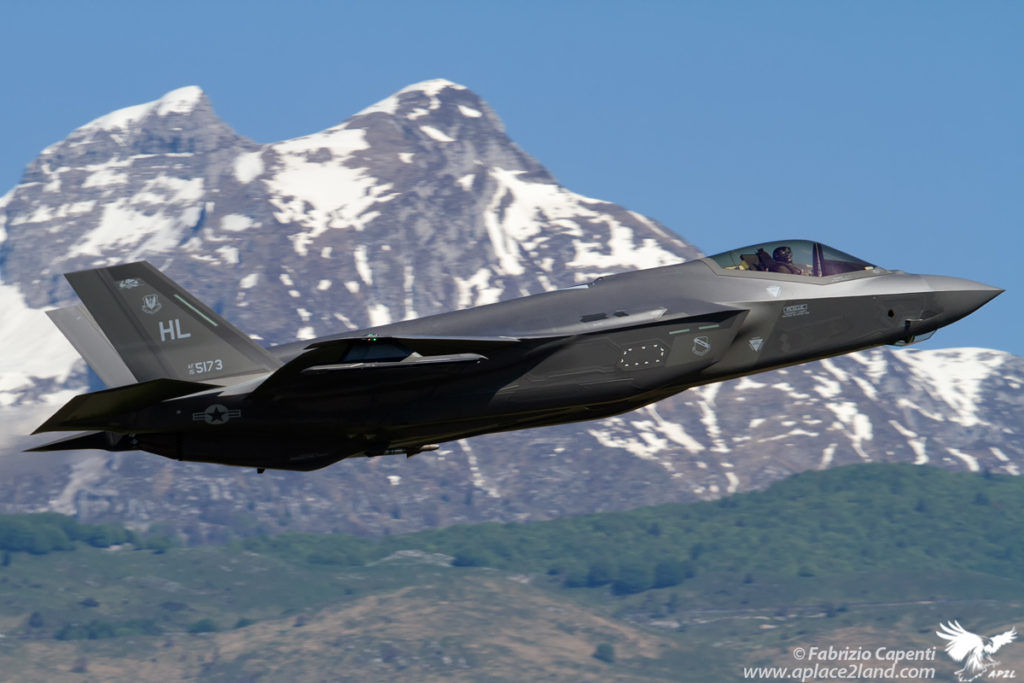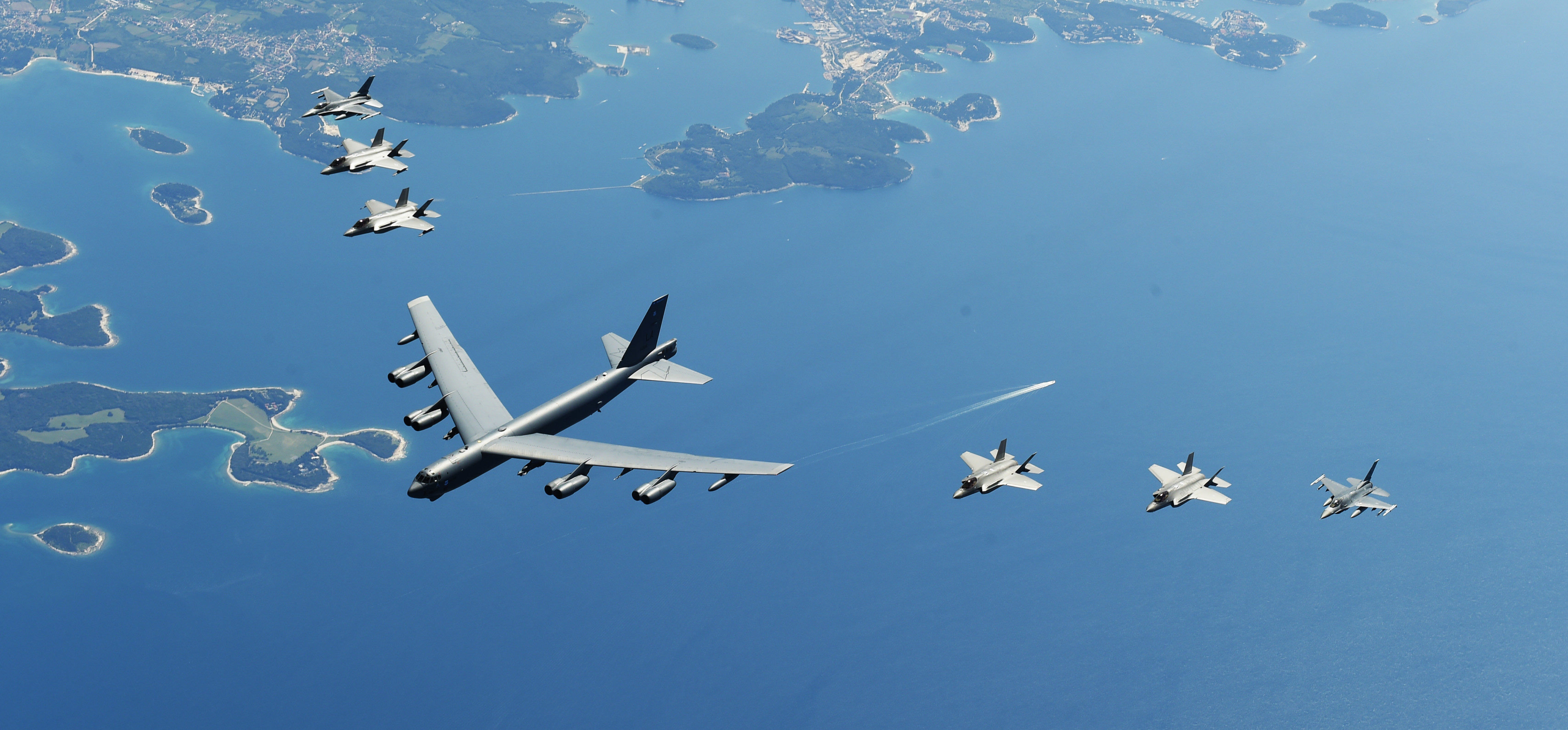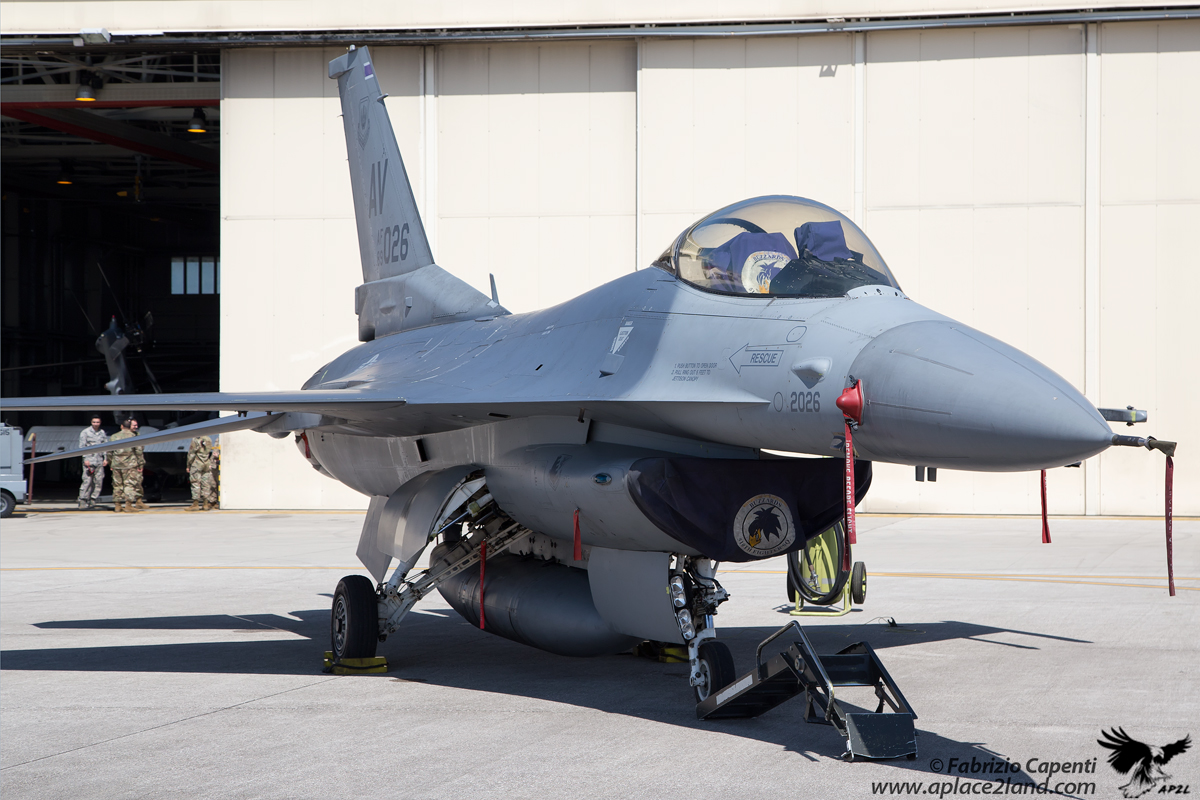Abstract
The joint and multi-national Astral Knight 2019 exercise took place from 3rd to 6th of June at the Aviano Air Base. This important training activity was organized and led by the US Air Force in Europe (USAFE) and involved about 900 men including soldiers, aviator and support personnel from various NATO allied nations, as well as the United States and Italy, participated staff from Slovenia and Croatia.



The missions involved a combination of real flights and virtual scenarios, designed to develop and maintain control of land, air and sea areas. The main objective of the missions carried out was to simulate the defense of key positions in a state, through the use of the integrated air and missile defense system IAMDS (Integrated Air And Missile Defense System). This type of exercises are useful for the development and increase of the interoperability of the various countries belonging to NATO.

List of Air Forces involved
Listed below the air forces and flight squadrons involved in the exercise Astral Knight.
U.S. Air Force components:
- 31st FW, usually based at Aviano AFB, equipped with F-16 C/D; the squadron involved is the 555th FS Triple Nickel;
- 388th FW, usually based at Hill AFB, Utah, deployed 12 F-35A at Aviano AFB, during TSP (Theather Security Package); the deployment is led by 421st FS “Black Widow”, equipped with multi-role 5th generation fighter F-35A, in use since the end of 2018. Also personnel of the 466th FS, USAF Reserve, was involved in the exercise.
- B-52H of 2nd Bomb Wing, based at Barksdale AFB, Louisiana; one day a B-52H flew directly from its homebase in order to join the mission.
- 457th FS, normally based at Nas Fort Worth, equipped with F-16s and operating from Campia Turzii, Romania;
- KC-135R from 171st Air Refueling Wing operating from Aviano AB;
- KC-135R from 100th Air Refueling Wing operating from RAF Mildenhall;
- Also involved the 507th Air Refueling Wing (normally based at Tinker Air Force Base) and 931st Air Refueling Wing (normally based at McConnell AFB, Kansas);
- E-3 of 605th Test and Evaluation Squadron, part of 505th Command and Control Wing, operating from Ramstein AFB;
- KC-10 of 514th Aerial Mobility Wing, 78th Aerial Refueling Squadron, based at McGuire Air Force Base, New Jersey.

At the port of Koper (Slovenia) the U. S. Army deployed a battery of Patriot missiles system of the 10th Army Air and Missile Defense Command, which operated with the support of a component of Slovenian military. This deployment was necessary to better represent the IAMDS, the defense system of the airspace with the use of air and land vehicles (surface-to-air missiles).

Italy Air Force component:
The Italian Air Force participated with the Eurofighter Typhoon aircrafts of the 4th Wing of Grosseto, 36th Wing of Gioia Del Colle and 37th Wing of Trapani, all deployed at Istrana and assisted by 51st Wing. The F-35A of 32nd Wing, which operated directly from their homebase located at Amendola, and a G550 CAEW aircraft of 14th Wing, operating directly from Pratica di Mare.
Also Croatia participated with Mig-21s, usually based at Zagreb Pleso Airport, but deployed in Zadar for the occasion.
Observations
The purpose of exercises of this type is to improve interoperability between the various flight components of different countries belonging to NATO. In particular, it was the first occasion that saw the American and Italian F-35As involved together in the same theater.

Nowadays it is very important to develop and strengthen the concept of interoperability between various assets of different nations: being able to maintain air superiority and keeping active the exchange of information that allow those who are responsible to make the right decisions to quickly react against threats in an optimal way is crucial for the success of an operation.

At the moment, after the acquisition of the IOC (Initial Operational Capability) in November 2018, Italy is the first nation in Europe to be operational with the fifth generation F-35A fighters. It was therefore essential to interface with another NATO member who uses the same type of aircraft, allowing them to train with other allies and partners such as neighboring states, improving coordination between them. During Astral Knight it was also possible to compare fourth-generation aircraft such as the Eurofighters and F-16s with fifth-generation stealth aircraft such as the F-35A, in order to maintain air superiority in the same theater of operations.


In this way, on the one hand the units of F-35A worked together with fourth generation fighters, as could happen during a period of real hostility; while at the same time the fourth generation squadrons have been able to increase their level of airspace control capability with the help of fifth generation aircraft. Both the F-35s of the USAF and those of the Italian Air Force operated side by side as a friendly force, this was the crucial aspect of the exercise Astral Knight: to be able to exchange information and achieve the same goal together.
A special thanks to USAFE and Italian Air Force for the opportunity, expecially to Capt. Korey Fratini (Public Affairs Officer, U.S. Air Forces in Europe & Air Forces Africa Public Affairs), and Lt. Col. Alessandro Alfonsi (Aviano Air Base, Italian Air Force).
Introduzione
Dal 3 al 6 giugno, presso la base aerea di Aviano, si è svolta l’esercitazione joint and multi-national Astral Knight 2019. Questa importante attività addestrativa è stata organizzata e guidata dall’ US Air Force in Europa (USAFE) ha visto coinvolti circa 900 uomini fra soldati, personale di volo e di supporto di varie nazioni alleate della Nato, oltre a Stati Uniti e Italia, ha partecipato personale di Slovenia e Croazia.

Le missioni prevedevano una combinazione di voli reali e scenari virtuali, atti a sviluppare e mantenere il controllo di aree terrestri, aeree e marittime. L’obiettivo principale delle missioni svolte durante l’Astral Knight è stato quello di simulare la difesa di posizioni chiave di uno stato, tramite l’utilizzo del sistema di difesa aerea e missilistica integrato IAMDS (Integrated Air And Missile Defense System). Questo tipo di esercitazioni sono utili per lo sviluppo e l’incremento dell’interoperabilità dei vari paesi appartenenti alla NATO.

Elenco forze aeree coinvolte
Qui di seguito si riportano le forze aeree e i reparti di volo coinvolti nell’esercitazione Astral Knight:
- 31st FW, normalmente basato ad Aviano, equipaggiato con F-16 C/D; in particolare ha partecipato il 555th FS Triple Nickel;
- 388th FW, di base a Hill AFB Utah, che ha rischierato 12 F-35A ad Aviano, durante il TSP (Theather Security Package); in particolare il 421st FS “Black Widow” ha guidato il rischieramento, equipaggiato con il caccia multiruolo di quinta generazione F-35A in uso da fine 2018. E’ stato coinvolto anche il personale del 466th FS appartenente alla riserva dell’USAF;
- B-52H del 2nd Bomb Wing basato a Barksdale AFB Louisiana; un di B-52H ha effettuato una missione decollando direttamente dalla propria base;
- 301st FW della riserva, di base a Nas Fort Worth, ha partecipato con 457th Fighter Squadron euipaggiato con F-16, rischierati a Campia Turzii, Romania;
- Aerocisterne KC-135 del 100th ARW, basate a Mildenhall, e del 507th ARW basati presso la Tinker Air Force Base, Oklahoma e 931st ARW basati alla McConnell AFB, Kansas;
- E-3 del 605th Test and Evaluation Squadron, parte del 505th Command and Control Wing, che ha operato da Ramstein AB;
- KC-10 del 514th Aerial Mobility Wing, 78th Aerial Refueling Squadron, di base a McGuire Air Force Base, New Jersey.
Presso il porto di Koper (Slovenia) l’esercito degli Stati Uniti ha rischierato una batteria del sistema missilistico Patriot del 10th Army Air and Missile Defense Command, i quali hanno operato con il supporto di una componente di militari sloveni. Questo rischieramento si è reso necessario per rappresentare al meglio l’IAMDS, ovvero la difesa dello spazio aereo con l’utilizzo di mezzi aerei e terrestri (missili terra aria).

L’Aeronautica Militare Italiana ha partecipato all’esercitazione Astral Knight tramite i velivoli Eurofighter del 4° Stormo di Grosseto, del 36°Stormo di Gioia Del Colle e del 37° Stormo di Trapani, tutti rischierati presso il 51° Stormo ad Istrana, che ne ha curato il supporto a terra. Hanno partecipato anche gli F-35A del 32° Stormo che operavano direttamente dalla loro base di Amendola ed un velivolo G550 CAEW del 14° Stormo, operante direttamente da Pratica di Mare.
La Croazia ha partecipato con i Mig-21, di solito basati all’aeroporto di Zagabria, ma che per l’occasione sono stati rischierati a Zadar.
Considerazioni
Lo scopo di esercitazioni di questo tipo è quello di migliorare l’interoperabilità tra i vari reparti di volo di paesi facenti parte della Nato. In particolare l’Astral Knight è stata la prima occasione che ha visto coinvolti assieme gli F-35A Americani e Italiani nello stesso teatro operativo.

Al giorno d’oggi è molto importante sviluppare e rafforzare il concetto di interoperabilità tra vari assetti di nazioni differenti: essere in grado di mantenere la superiorità aerea e mantenendo attivo lo scambio di informazioni che permette di reagire in tempi brevi contro le minacce nel modo ottimale, permettendo a chi di dovere di prendere le giuste decisioni, questo è determinante per la buona uscita di una operazione.

Al momento, dopo l’acquisizione della IOC(Initial Operational Capability) in novembre 2018, l’Italia è la prima nazione in Europa ad essere operativa con i caccia di quinta generazione F-35A. E’ stato fondamentale quindi interfacciarsi con un altro membro della Nato che si avvale dello stesso tipo di velivolo permettendo di addestrarsi con altri alleati e partner come gli stati confinanti, migliorando la coordinazione fra gli stessi. Inoltre, durante l’Astral Knight, è stato possibile confrontare aerei di quarta generazione come gli Eurofighter e F-16 con aerei stealth di quinta generazione come l’F-35A per mantenere la superiorità aerea nello stesso teatro operativo.

In questo modo, da un lato i reparti di F-35A hanno operato assieme a caccia di quarta generazione, come potrebbe accadere durante un periodo di ostilità reale; mentre allo stesso tempo i reparti di quarta generazione hanno potuto aumentare il loro livello di capacità di controllo dello spazio aereo grazie all’aiuto di velivoli di quinta generazione. Sia gli F-35A dell’Usaf che quelli dell’Aeronautica, hanno operato affiancati come forza amica, questo è stato l’aspetto cruciale dell’esercitazione Astral Knight: potersi scambiare informazioni e raggiungere assieme lo stesso obiettivo.
Un sentito ringraziamento all’USAFE e alla Aeronautica Militare Italiana per l’opportunità concessa. Si ringraziano il Capt. Korey Fratini (Public Affairs Officer, U.S. Air Forces in Europe & Air Forces Africa Public Affairs), Ten. Col. Alessandro Alfonsi (Aviano Air Base, Aeronautica Militare Italiana).
